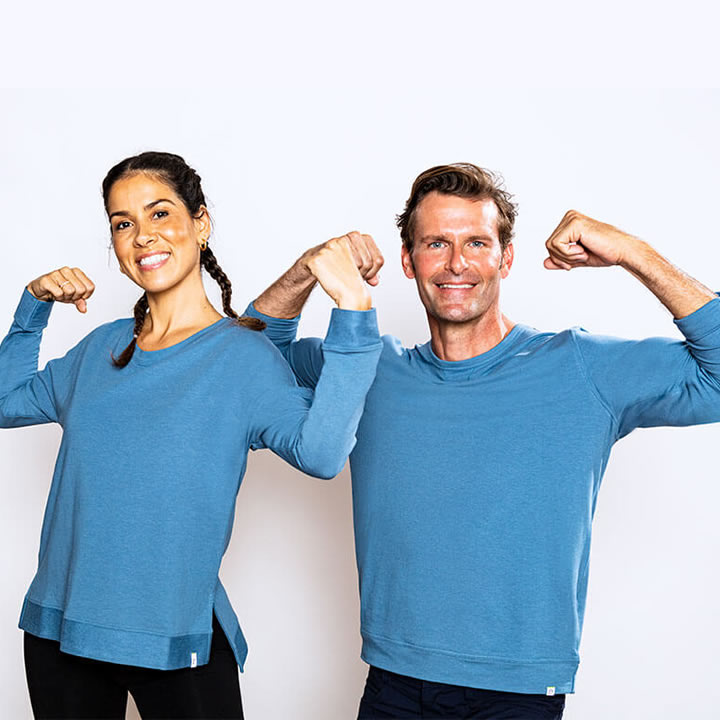We’ve come a long way from times when the only thing (if anything) covering us was leaves and animal hides. However, whether it was a consumer in pre-historic times or one in the 21st century, the fashion and textile industry has to constantly come up with newer and better fabrics to accommodate what consumers want and need.
You might not have heard of French Terry, but you’ve used a product made up of French Terry. Think back to that comfy sweatshirt you spent the entire winter in. The one that was soft on the inside, but smooth on the outside – that’s French Terry.
Understanding the Fabric
The primary component of French Terry is cotton, however, the fabric is a lot heavier than cotton. If you were to hold a shirt made up of 100% cotton in one hand and one of French Terry in the other, the latter would feel heavier. However, this isn’t to say that French Terry is the heaviest fabric out there, nor that it can sustain severe winter.
The fabric is used commonly to make sweatshirts, sweat pants, shirts, and other materials such as towels, bathmats, etc. When you first read the words ‘French Terry’ you might have thought it was about Terry Cloth (what most towels are made of).
If you did think that, the good news is you weren’t entirely far off. Both Terry Cloth and French Terry are knit fabrics and therefore have some difference between them and cotton, wool, or jersey.
Single knit fabrics, synthetic fabrics, and knit fabrics differ based on the pattern the yarn is woven in. For French Terry fabrics and other knit fabrics, the yarn is woven in interconnecting loops to give a soft texture on one side and a smooth one on the other.
This is commonly seen with autumn clothing, hence the desired season for French Terry products.
Plus Sides to Wearing French Terry Products
- Comfortable – the products are made to be as comfortable, cozy, and light-weight as possible.
- Moisture Wicking – Moisture-wicking refers to the ability to draw sweat away from your body. Unlike many other moisture-wicking products, French Terry doesn’t build up a sweat to the point that the fabric starts wreaking of it. Instead, it is equally odor resistant and dissipates the smell.
- Can be Worn Year-Round – The fabric is light-weight, yet snug enough to be worn all year round. Either in winters with different layers or as it is in the warmer months.
- Flexibility – While cotton is the primary component of French Terry, the fabric also has other components, such as spandex, polyester, rayon, synthetic threads, and so forth to make it more flexible.
- Versatile – French Terry isn’t a fabric limited to just sweatshirts and sweatpants, it can be used to make an entire collection of products from your everyday T-shirt to shorts, and much more.
Maintaining French Terry
If your wardrobe is filled with French Terry materials, you’re probably in luck. The material is a low-maintenance one that doesn’t require much washing or ironing. Simple laundry washes will work to remove the moisture that builds up in the fabric during the day. The fabric’s natural stretch (owing to it being a knit fabric) keeps it from wrinkling.
Conclusion
French Terry is a lot different than the beloved cotton T-shirts or the popular Terry Cloth towels. The fabric has built a rapport in its own right as a durable, comfortable, versatile, and moisture-wicking product. The fabric is incredibly low-maintenance and doesn’t require much ironing or washing – you’re always good to go with French terry.

